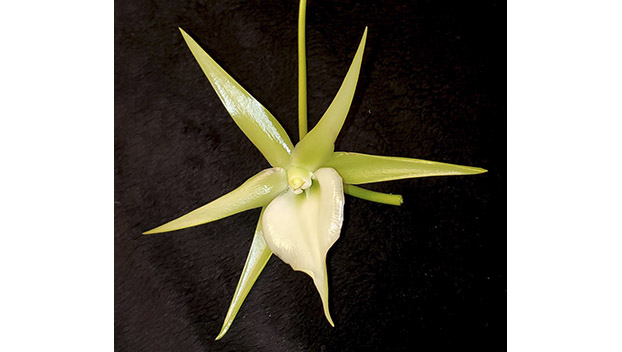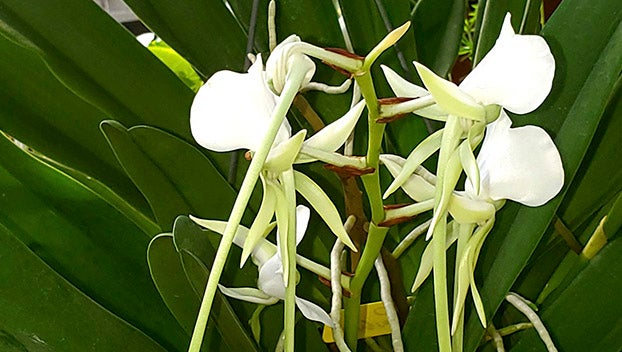Through The Garden Gate — Darwin’s Orchid: An uncommon house plant
Published 5:37 pm Friday, February 3, 2023

- Darwin’s orchid has star-shaped flowers with very nectar spurs and is only pollinated by one species of moth.
|
Getting your Trinity Audio player ready...
|
It’s February, that short month that seems to go on forever. It threatens us with cold, wet weather and then teases us with warm, breezy days that hint at spring. Sometimes not even the latest seed catalogs are enough to preserve a gardener’s sanity.
A new house plant is needed. Something different, something with a tropical look that hints at warmer climes and travel to some exotic location. Yes, an orchid is just the thing to cure the February doldrums.
During the past decade, orchids have become increasingly popular house plants. Phalaenopsis or moth orchids can be bought at many big box stores and even at the supermarket. They’re easy to grow and have blooms in a variety of colors – white, pink, magenta, salmon, and red. Some even have colored venation.
If you’re looking for something more exotic, but still relatively easy to grow, consider a Darwin’s orchid (Angraecum sesquipedale), which is also called the comet orchid and the star of Bethlehem orchid, both references to its unique bloom. It’s called Darwin’s orchid because he made a famous prediction about how it is pollinated.

Darwin’s orchid is a native of Madagascar where it grows on tree trunks at low elevations; it’s an epiphyte. This orchid has large, waxy white blooms that are fragrant at night and have nectar spurs that can be over 12 inches long, hence the common names comet orchid and star of Bethlehem. When Darwin saw the plant in 1862, he predicted that it was pollinated by a moth with a very long proboscis, but such a moth had never been seen in Madagascar or anywhere else, so his prediction was ridiculed. In the early 1900s, such a moth, Xanthopan morganii praedicta the only pollinator for A sesquipedale, was found. Xanthopan morganii identifies a Darwin’s orchid by scent. The moth then backs up about a foot, unfolds its proboscis, and flies forward to insert its proboscis into the nectar spur. After drinking the liquid at the bottom of the spur, the moth begins to withdraw its proboscis and raises its head at the same time, thus making contact with the viscidium where the pollinia are. When the moth visits another orchid, the pollen is transferred to that plant.
To grow a Darwin’s orchid at home, place it in an area where it gets medium to high amounts of light and good air circulation. Water as soon as the potting medium begins to dry and provide more water when the orchid is in bud or blooming. Blooms usually appear in September through December and can last several months. As the plant ages, blooms tend to become larger and have longer nectar spurs.
The Darwin’s orchid provides interesting flowers, fragrance, and attractive foliage. It’s worth the effort to grow it, and will definitely help solve the gardener’s February doldrums.
Dr. Cynthia Wood is a master gardener. Her email address is cynthia.crewe23930@gmail.com.





